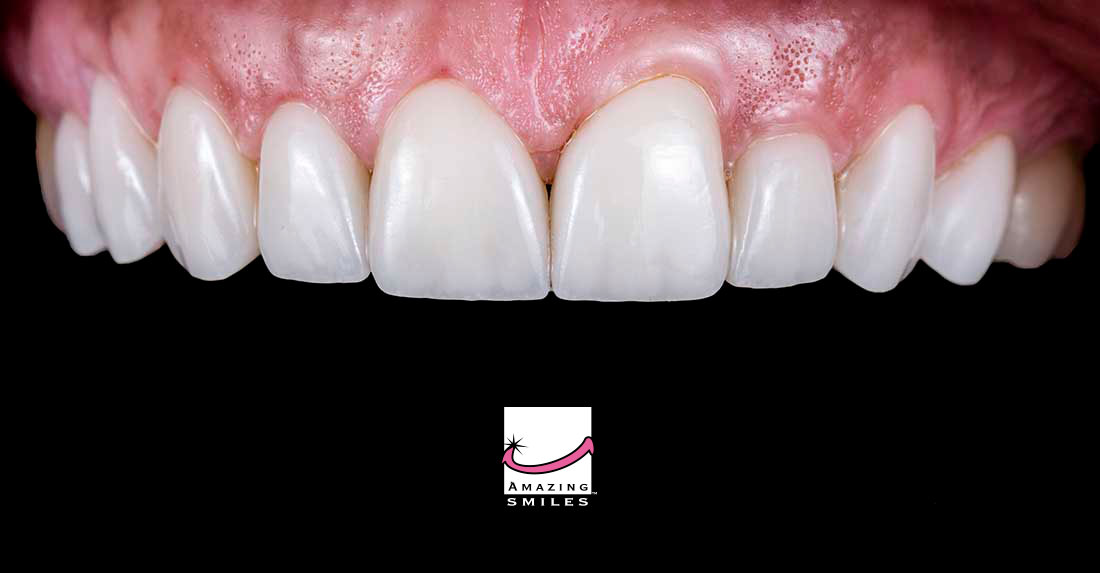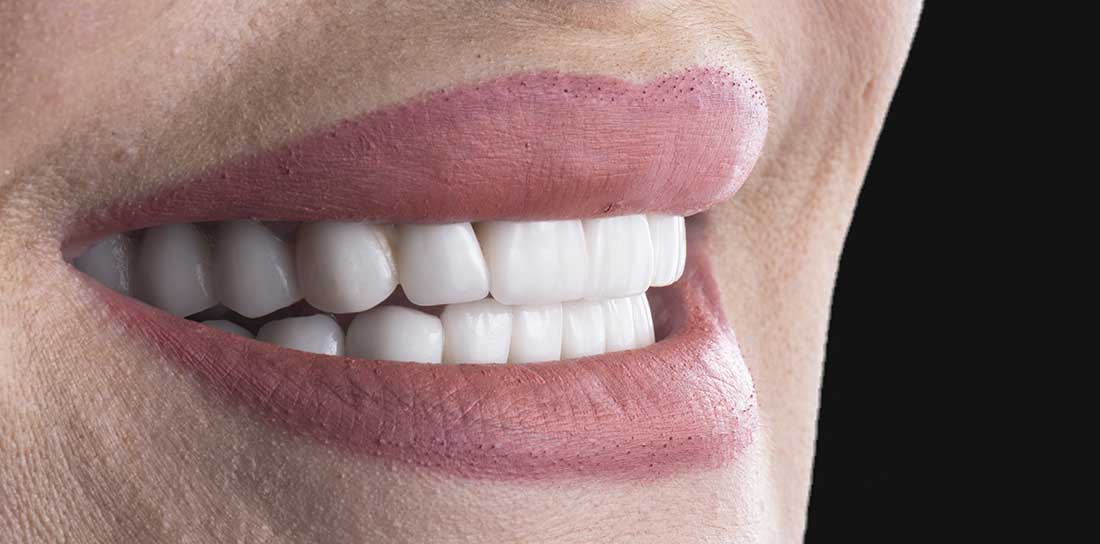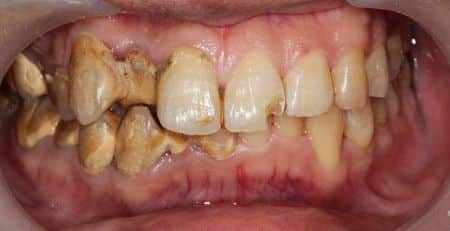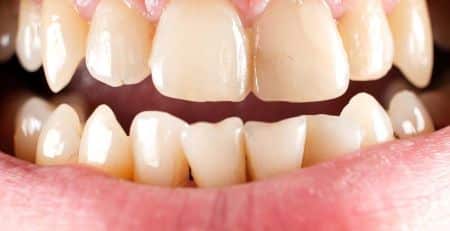Table of Contents
What are Veneers? Guide to Porcelain Veneers
In cosmetic dentistry, porcelain veneers are among the most sought-after treatments for transforming a dazzling smile. These thin shells, custom-made to fit the front surfaces of teeth, can correct various dental imperfections, offering both aesthetics and durability.
Porcelain veneers are thin shells of porcelain custom-designed to cover the front surfaces of teeth. Think of them as a semi-permanent “facade” for your teeth. They are used in cosmetic dentistry to enhance the appearance of one’s smile.
The cost-effective alternative to porcelain teeth is composite veneers.
Why People Get Porcelain Veneers
Porcelain veneers have risen in popularity primarily because of their versatility in correcting cosmetic imperfections. They effectively address stained or discoloured teeth that don’t respond to traditional whitening methods, cover chips or cracks, rectify misshapen or unevenly sized teeth, and even bridge minor gaps. Essentially, they offer a swift solution for achieving a harmonious, radiant smile.
Benefits of Veneer Teeth
Veneer teeth offer a practical, long-lasting solution to improve the overall appearance of your smile. They are designed to address a wide range of dental imperfections, helping patients achieve a more confident and balanced look.
Staining or Discolouration
One of the main advantages of veneers is their ability to conceal staining or discolouration that may not respond to traditional teeth whitening methods. Whether the cause is genetics, medication, or lifestyle habits, porcelain veneers can effectively mask deep stains and restore a brighter, more uniform smile.
Chips and Cracks
Veneers are also a reliable option for covering minor chips or cracks in the teeth. Rather than undergoing more invasive restorative procedures, veneers provide a minimally invasive way to restore a smooth, natural finish to damaged enamel.
Improve the minor misalignment of teeth
In addition, veneers can help improve the appearance of slight misalignments or gaps between teeth. Although they are not a replacement for orthodontic treatment, veneers can create the illusion of straighter, more evenly spaced teeth, giving patients an instantly more harmonious smile.
Natural Appearance
For individuals with misshapen or worn-down teeth, veneers can help restore symmetry and uniformity. Each veneer is custom-crafted to match the natural contours and shade of your teeth, resulting in a seamless and balanced appearance. Expertly made porcelain veneers replicate the natural translucency and light-reflecting qualities of real enamel, making them virtually indistinguishable from natural teeth. The result is a smile that not only looks beautiful but also feels completely natural.
Durability
In addition to their aesthetic benefits, porcelain veneers are known for their durability and stain resistance. With proper care, they can last for 10 to 15 years or more, maintaining their appearance even with regular exposure to coffee, wine, or other staining substances.
Minimal Enamel Removal
Another key advantage is that veneers require less enamel removal than crowns, preserving more of your natural tooth structure.
Fast Transformation
One of the most appealing benefits of veneer treatment is the rapid transformation it provides. In just a few dental visits, patients can achieve a complete smile makeover, enhancing both confidence and appearance with minimal discomfort and downtime. Porcelain veneers offer a blend of artistry and precision, making them one of the most effective cosmetic dentistry solutions for creating long-lasting, natural-looking smiles.
Veneers Procedure: What to Expect?
To place ceramic veneers, a dentist usually begins by removing a small amount of the tooth’s surface (generally less than a millimetre) to make room for the veneer. Impressions of the teeth are then taken and sent to a dental laboratory, where the veneers are custom-made for each patient. Once the veneers are ready, they are bonded to the teeth using a strong adhesive.
Here’s a step-by-step breakdown of the procedure:
Initial Consultation Assessment
The journey begins with a thorough consultation, where the dentist evaluates your oral health and discusses your aesthetic goals.
Treatment Plan
Based on the assessment, the dentist creates a personalised treatment plan, ensuring that veneers are an appropriate solution for you.
Mock-ups and Imaging
Some dentists use digital imaging or create mock-ups to show you what your smile could look like after treatment.
Tooth Preparation Local Anesthesia
To ensure comfort, a local anesthetic may be applied to numb the area.
Enamel Removal
A small amount of tooth enamel (typically about 0.5mm) is removed from the tooth’s front surface to make room for the veneer. This ensures a natural look and proper fit.
Impression Taking
After the teeth are prepared, the dentist takes an impression or mould of them. This impression is sent to a dental laboratory to fabricate the veneers tailored to the teeth.
Temporary Veneers (Optional)
Depending on the amount of enamel removed and the visibility of the prepared teeth, temporary veneers may be placed to protect them. In contrast, the permanent veneers are being crafted. These are usually made of acrylic and are removed once the permanent veneers are ready.
Dental Laboratory Fabrication
The dental lab receives the impressions and crafts the veneer teeth. This process can take anywhere from one to three weeks. Modern techniques also involve dental CAD/CAM technology for precision and rapid fabrication.
Bonding the Veneers
Cleaning and Etching
Before bonding, the tooth surface is thoroughly cleaned and etched. The teeth are then etched slightly with an acidic solution to create a rough surface for better bonding.
Test Fitting
Before permanently attaching the veneers, the dentist will temporarily place them on your teeth to examine their fit and appearance. Minor adjustments might be made at this stage.
Bonding
Once a perfect fit is achieved, a specialised cement is applied to the veneer, which is then placed onto the tooth. A curing light activates the cement, ensuring a secure bond.
Final Adjustments
Excess cement is removed after bonding, and final adjustments are made as needed.
Follow-up
A follow-up visit may be scheduled a few weeks after the veneers are placed. This allows the dentist to assess the state of your gums around the veneers and ensure everything is as it should be.
Risks of Porcelain Veneers
Porcelain veneers are a popular and effective way to enhance your smile, offering a natural-looking and long-lasting cosmetic solution. However, as with any dental procedure, they carry a few potential risks and considerations. Understanding these helps patients make informed decisions and maintain realistic expectations before proceeding with treatment.
Irreversible Procedure
One of the most important aspects to understand about porcelain veneers is that the treatment is irreversible. To ensure a natural, seamless fit, your dentist removes a thin layer of enamel — typically around 0.5 millimetres — from the front surface of each treated tooth. This step is necessary to create enough space for the veneer to sit flush with your natural teeth and to ensure proper adhesion.
Once this enamel is removed, it cannot regenerate. This means that the treated teeth will always require some form of restoration, either veneers or another covering, in the future. While this modification is minimal, it’s a permanent change to the tooth structure, making it essential to carefully consider the decision with your dentist before moving forward.
Potential for Damage
Porcelain veneers are highly durable, but like natural teeth, they are not entirely resistant to damage. Chipping, cracking, or debonding can occur if excessive pressure is applied, such as from biting hard foods, teeth grinding (bruxism), or using your teeth as tools to open packages.
While such occurrences are rare, they can happen over time, especially if proper care is not taken. In most cases, small chips can be polished or repaired, but more significant damage may require replacement of the veneer. Dentists often recommend protective measures, such as a custom night guard, to safeguard veneers from grinding or clenching during sleep.
Tooth Sensitivity
After veneers are placed, some patients experience temporary tooth sensitivity, especially to hot or cold temperatures. This occurs because a thin layer of enamel has been removed during preparation, thereby slightly exposing the underlying dentin.
The sensitivity usually subsides within a few days or weeks as your teeth adjust to the new veneers. Using a desensitising toothpaste, avoiding very hot or cold foods, and maintaining excellent oral hygiene can help minimise discomfort during this period. If sensitivity persists, your dentist may perform additional checks to ensure that the veneers are correctly fitted and bonded.
Although porcelain veneers carry some risks, they are considered a safe and highly predictable cosmetic treatment when performed by an experienced dentist. Most complications are minor and preventable with proper care, follow-up visits, and good oral hygiene habits. With professional guidance, veneers can provide lasting beauty and confidence, offering a smile transformation that feels both natural and comfortable.
Maintenance of Porcelain Veneers

Maintaining ceramic veneers is straightforward and mirrors the care for natural teeth.
Regular brushing and flossing are vital; it is also advisable to avoid biting on complex objects like ice or using teeth as tools.
Regular dental check-ups ensure that the veneers and natural teeth remain in optimal condition.
Foods and Drinks to Avoid with Porcelain Veneers

Having porcelain veneers can give you a bright, confident smile. Treating them with care is essential to maintain their appearance and longevity. While veneers are durable and resist stains better than natural teeth, certain foods and beverages can pose potential risks. Here are some foods and drinks to minimise or avoid.
Hard and Crunchy Foods
- Ice: Chewing on ice can potentially chip or crack your veneers.
- Hard candy: Sucking is fine, but biting down might damage your veneers.
- Nuts: While they are healthy, it’s best to be cautious when biting directly into very hard nuts.
- Hard fruits and vegetables: Biting into foods like raw carrots or apples might put undue pressure on veneers. Consider cutting them into smaller pieces before eating.
Sticky Foods
- Caramel and Taffy: These can dislodge a veneer, especially if not bonded correctly.
- Chewing gum: While gum isn’t necessarily harmful, excessive chewing can strain the veneers.
Foods with Intense Colour
- Berries: Blueberries, blackberries, and raspberries can cause staining over time.
- Soy sauce, curry, and tomato sauce: They are rich in colour and can tint the bonding agent or the edges of the veneers over prolonged exposure.
Beverages
- Both coffee and tea can stain your mouth over time. If you consume them, consider rinsing your mouth afterwards.
- Red wine: Known to stain teeth, red wine can also discolour the edges of veneers.
- Soda and sports drinks are often dark-coloured, and their high acidity can erode the bonding material over time.
Other Considerations
- Alcohol: Consuming excessive alcohol can soften the bonding agent used with veneers. While occasional drinking is fine, regular heavy consumption can compromise the longevity of veneers.
- Tobacco Products: Both smoking and chewing tobacco can lead to discolouration.
In addition to the above, always practice good oral hygiene to maintain the health of your teeth and gums, ensuring the foundation for your veneers remains strong.
How much do porcelain veneers cost in Australia?
The price range for porcelain veneers typically ranges from $1,100 to $1,800 per tooth. Several factors can influence this cost, including the patient’s specific dental needs, the quality of the selected materials, any unexpected treatments necessary to ensure the best possible outcome for the veneer placement, and the total number of veneers procured in a single set.
Want to find out more? Book in with Amazing Smiles Cosmetic Dentists
The journey to a dream smile is more accessible than you might think. At Amazing Smiles, we provide expert guidance and craftsmanship in porcelain veneers.
As preferred provider dentists, we ensure quality and satisfaction. Plus, our flexible payment plans make your new smile an affordable luxury.
Don’t let apprehensions hold you back. Take advantage of our free initial consultation, during which our cosmetic dentists offer an in-chair personalised treatment plan tailored just for you.
Disclaimer: This article is intended for informational purposes only and should not be considered definitive dental advice. It’s essential to consult with your local cosmetic dentist to discuss your porcelain veneer smile makeover and any post-treatment care specific to your individual needs. Every patient’s oral health and circumstances are unique, and personalised guidance from a dental professional is paramount.








